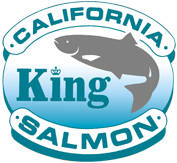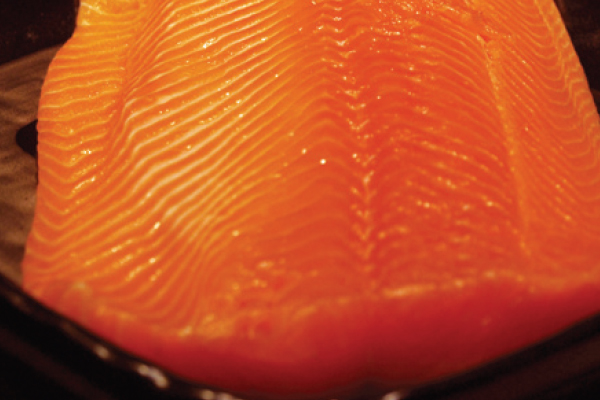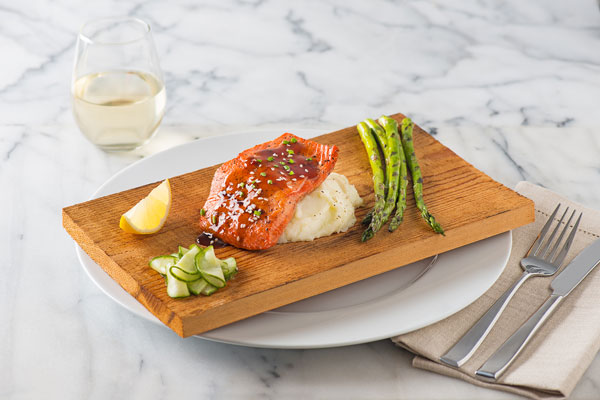The History of Pacific Salmon
1779 : Captain James Cook, looking for the Northwest Passage, found the Columbia River and started the trade in beaver pelts. Trapping beaver was the first major change in salmon habitat on the west coast.
1811 : John Jacob Astor established a fur trading post at Astoria. He went on to become the first multi-millionaire in the United States.
1818 : The harvesting of Spring Chinook on the Columbia River begins.
1823 : Astor’s company begins exporting pickled salmon to London.
1828 : The first saw mill was established at Mill Plain on the lower Columbia.
1843 : The center for the fur industry moves north to Vancouver Island as the beaver population in the U.S. is depleted.
1848 : August 14 – The Oregon Territory is created. The territorial constitution includes a provision for protecting salmon, including the requirement of fishways at all dams.
1853 : March 2 – The Washington territory was created.
1855 : Treaties between the United States and Columbia River Indian tribes is signed and the tribes retain and secure the right to fish in their usual and accustomed places.
1859 : The first irrigation project is constructed in the Columbia Basin.
1866 : Hume and Hapgood build the first salmon cannery on the Columbia River after having abandoned the Sacramento River in California.
1869 : The transcontinental railway is completed, allowing for the transfer of salmon to the east coast.
1872 : Chinook eggs (30,000) are taken from the McCloud hatchery in California and shipped live to the east coast in a failed attempt to revive salmon in the Susquehanna.
1874 : The Payette River in Idaho produced a commercial sockeye catch of 30,000 lbs.
1875 : U.S. Fish Commissioner, Spencer Baird, told the fishing industry that artificial propagation would eliminate the need to regulate harvest. It was believed that humans would assume control over salmon production with hatcheries in the same way agriculture controlled the production of plants and animals.
1877 : There are three hatcheries on the West Coast: the McCloud hatchery in California and the Rogue River and Clackamas hatcheries in Oregon.
1878 : The first hatchery is constructed in the Columbia Basin at Clear Creek by salmon canneries to increase salmon on the Columbia River.
1880 : Sockeye salmon on the Payette River are commercially extinct.
1880 : The number of salmon canneries on the Columbia peaks at 39.
1883 : The harvest of Chinook salmon on the Columbia peaked. There were approximately 1,700 gill net boats. They landed 42,799,000 pounds of fish processing 600,000 cases of canned salmon (48# per cs.). Within 6 years the landings had dropped by almost 60%.
1889 : Canneries begin processing sockeye and steelhead for the first time due to a decline in Chinook landings.
1890s : In the Grande Ronde Valley logging accounted for 15-20 million board feet per year. Splash damming blocked salmon migration and destroyed spawning and rearing habitats.
1900 : Gas engines were added to salmon boats leading to the creation of the ocean troll fishery.
1915 : Purse seines are prohibited on the Columbia.
1928 : There are 15 hatcheries operating in the Columbia Basin releasing 2 billion fry into the river.
1933 : Owyhee Dam is built on the Owyhee River ending salmon and steelhead in the river and the only salmon run in Nevada.
1944 : In September the Hanford Plant in Washington begins producing plutonium.
1965 : Summer Chinook fishing is closed on the Columbia to protect the stock.
1967 : Hells Canyon Dam is completed and blocks about 80% of the fall Chinook spawning habitat in the Snake River.
1975 : The Columbia River sockeye fishery is closed.
1976 : The spring Chinook fishery on the Columbia is closed.
1979 : Idaho closes its spring Chinook fishery.
1986 : Coho salmon on the Snake River are declared extinct.
1991 : Snake River sockeye are listed as an endangered species.
1992 : Snake River spring, summer and fall Chinook are all listed as threatened under ESA.
1994 : Ocean fish is banned for the first time off the cost of Washington and Northern Oregon.
1997 : Native steelhead on the upper Columbia are listed as endangered under ESA.
1997 : Native steelhead on the Snake River Basins are listed as endangered.
1998 : Native steelhead in the lower Columbia are listed as threatened.
1999 : Chum salmon in the lower Columbia River are listed as threatened.
1999 : Fall Chinook in the lower Columbia River are listed as threatened.
1999 : Spring Chinook on the Willamette above the falls and the Clackamas River are listed as threatened.
1999 : Spring Chinook in the upper Columbia are listed as endangered.
1999 : Winter steelhead in the Willamette above the falls are listed as threatened.
1999 : Winter and summer steelhead in the middle Columbia are listed as threatened.
2004 : The Bush administration proposes to remove 80% of the critical habitat designation for ESA-listed salmonids on the West Coast.
2005 : Lower Columbia River Coho are listed as threatened.




